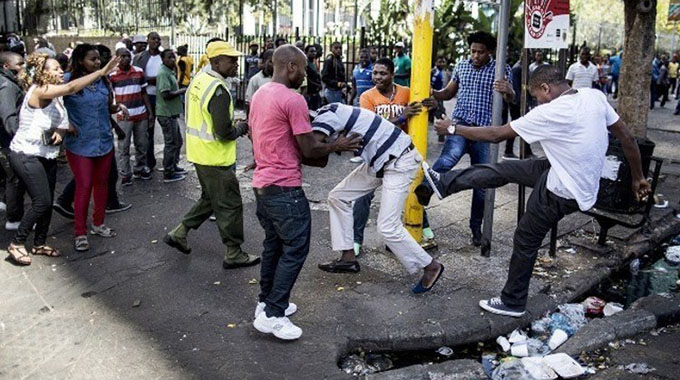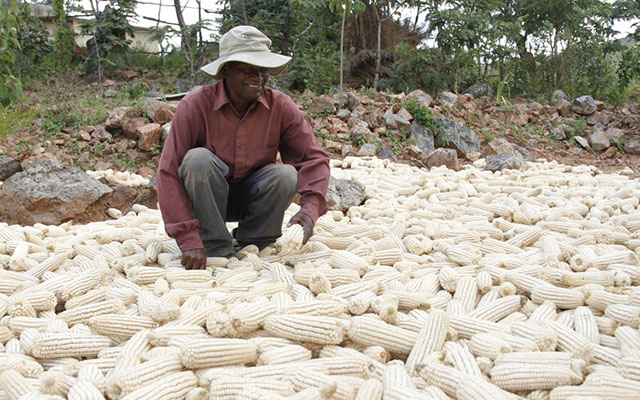Solutions for cities on climate change frontline

Santiago Alba-Corral and Kathryn Touré
Cities are major contributors to climate change, but they also have the power to change the world.
They are one of the keys to addressing the global climate change crisis and some of them, informed by science, are already doing so.
More cities must follow in the footsteps of those cities already taking action.
Millions of people worldwide are taking to the streets demanding climate action. This call for action is at the forefront of the 25th Conference of the Parties (COP25) to the United Nations Framework Convention on Climate Change, which took place from December 2-13 in Madrid.
This critical annual meeting brings the international community together to share solutions, galvanise momentum, and track progress towards the Paris Agreement climate commitments.
We must seize upon these opportunities for collaboration and solution-sharing as the scale and frequency of climate change-related crises continue to grow.
The devastation caused by extreme weather events is contributing to the growing demand for climate action.
In Mozambique, 90 percent of Beira town, was destroyed by Cyclone Idai, killing more than 1 000 people and leaving 400 000 homeless.
The UN Office for the Coordination of Humanitarian Affairs reports that heavy rains in Burundi, Uganda, Kenya and Somalia have left 280 people dead; 2,8 million have been affected by flooding.
In a report to the ongoing COP25, Save the Children stated that climate shocks have left millions in Africa facing hunger.
The charity further noted that 33 million people in 10 countries in East and southern Africa are at emergency levels of food insecurity due to cyclones and droughts.
Climate change is an urgent concern with implications for every person on earth. The time for action is now.
Why the focus on cities, and why now?
By 2050, two-thirds of the world’s population will live in cities. Cities are already home to more than half the world’s population and the majority of infrastructure, assets, and economic activity.
They consume 78 percent of global energy and account for more than 60 percent of greenhouse gas emissions.
Yet, they cover only two percent of the world’s surface. Strong evidence is available to inform local and national governments so that they design resilient cities and mitigate their impact.
For vulnerable people living in and around cities, in particular for women and girls, this may prove a matter of life and death.
Cities must invest in research to understand their unique challenges, how their citizens are affected, and what localised solutions are best-suited to their context.
In the informal settlements of Accra, the capital of Ghana, flooding has caused deaths, destroyed homes, and increased the risk of malaria and water-borne diseases such as cholera.
There, Doringa Grant runs a kindergarten just steps away from a drainage canal. When it rains, the canal floods and filthy water seeps through the walls.
Doringa says it’s become worse in recent years because of changing weather patterns.
Working with Doringa and her neighbours, researchers studied the global and regional models on climate change and developed plausible climate scenarios to inform Ghanaian policymakers to design and budget for better water infrastructure — bridges, drains and sanitation, water supply, and irrigation systems.
Many solutions for urban climate adaptation are low-cost, low-tech, and nature-based.
In the small industrial city of Yumbo, in Colombia, green infrastructure has been used to mitigate flooding. Paved roads are replaced with porous green roads that allow water percolation and reduce the urban heat-island effect.
Results have shown that these roads significantly reduce localised flood hazards.
Proven solutions, backed by rigorous science, exist to many of the climate shocks and stresses facing at-risk cities.
Throughout the Global South, urban planners and regional leaders have been working for years to build their capacity to anticipate, adapt, and persevere.
In addition to these efforts, city-level, secure financing is needed to address climate change.
The resilience and adaptability of cities in the face of climate change will influence whether global targets on climate change and sustainable development are achieved.
When a country is hit by flooding, record rainfalls, and other extreme and damaging weather events, the necessary focus on a crisis response can cloud the bigger picture, which reveals the common ground between the challenges — and solutions — that exist worldwide.
If we are to meet the global commitment to “leave no one behind”, we must tackle the multiple dimensions contributing to urban poverty, vulnerability, and inequality.
This means amplifying the commitment to our global climate that will be on display at COP25 in Madrid so that it infuses political, policy, research, and investment agendas worldwide with the imperative need for action.
Santiago Alba-Corral is the director, Agriculture and Environment at Canada’s International Development Research Centre) and Kathryn Touré is the regional director, International Development Research Centre office for eastern and southern Africa.







Comments